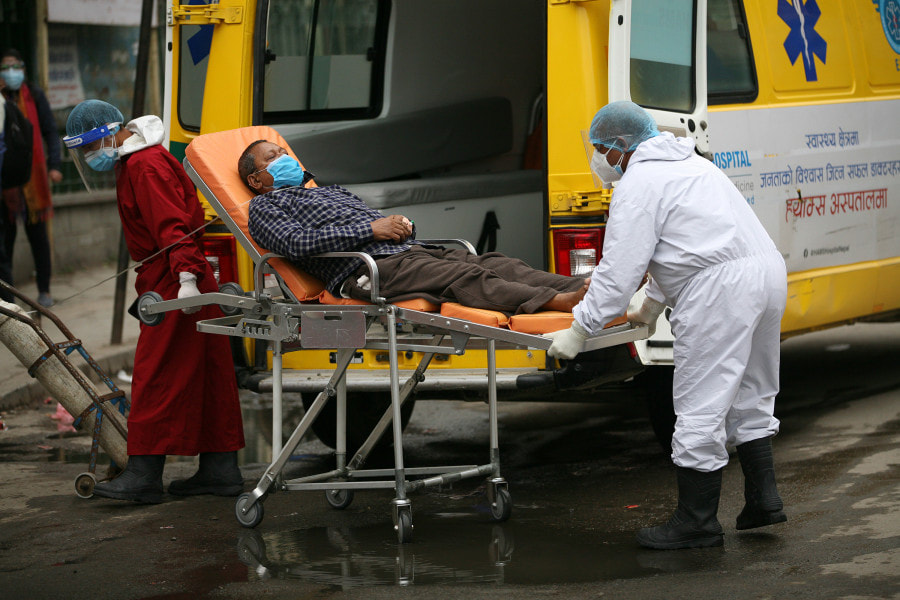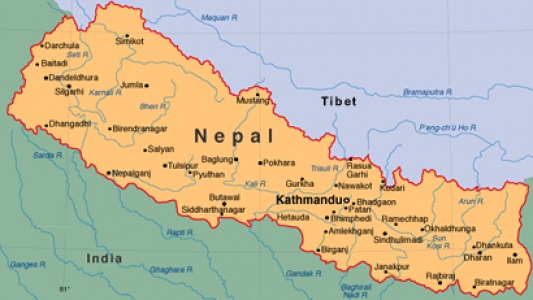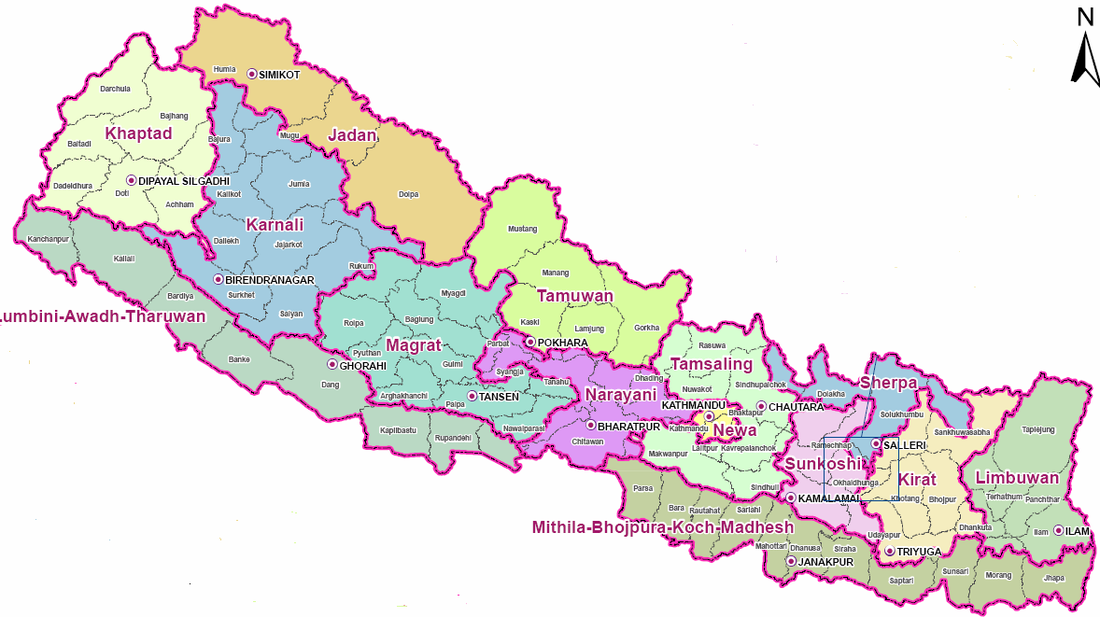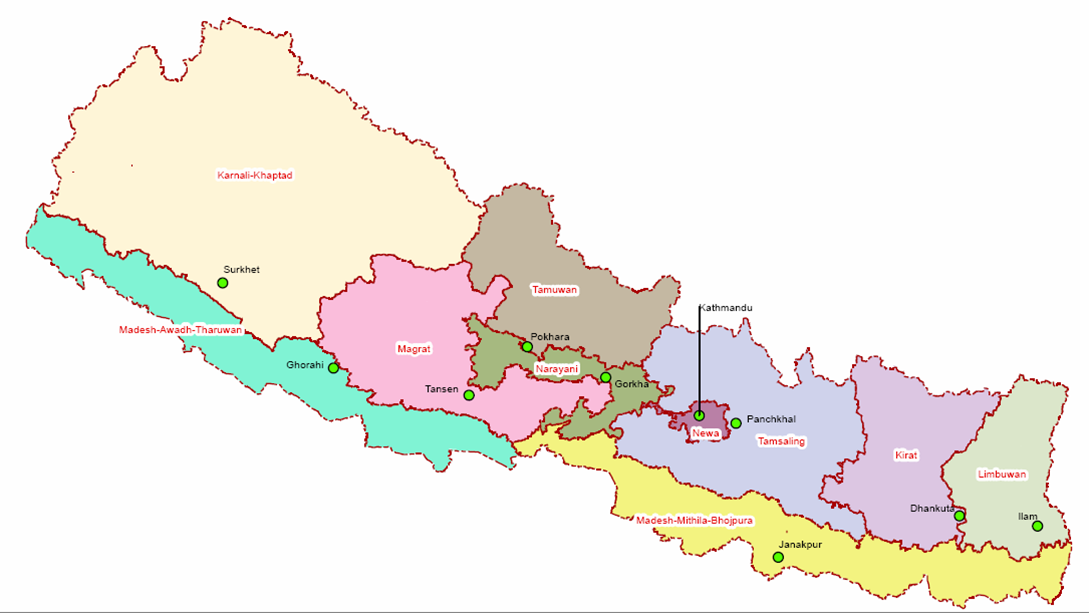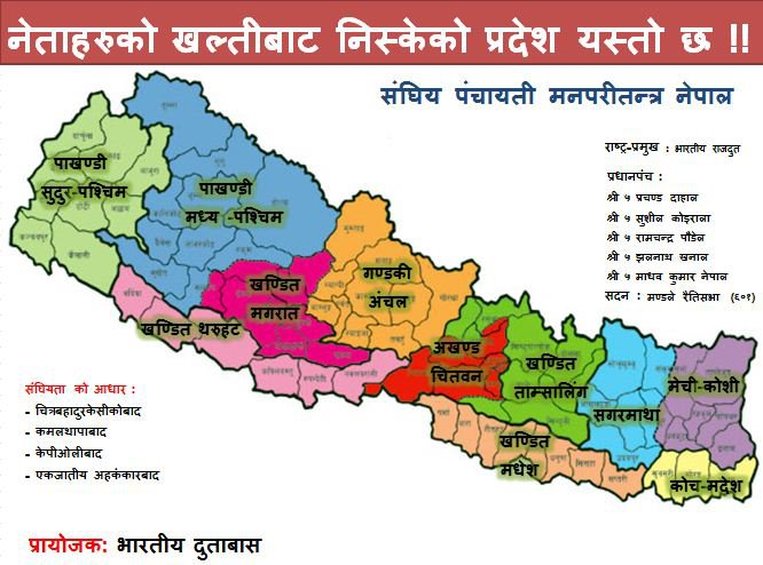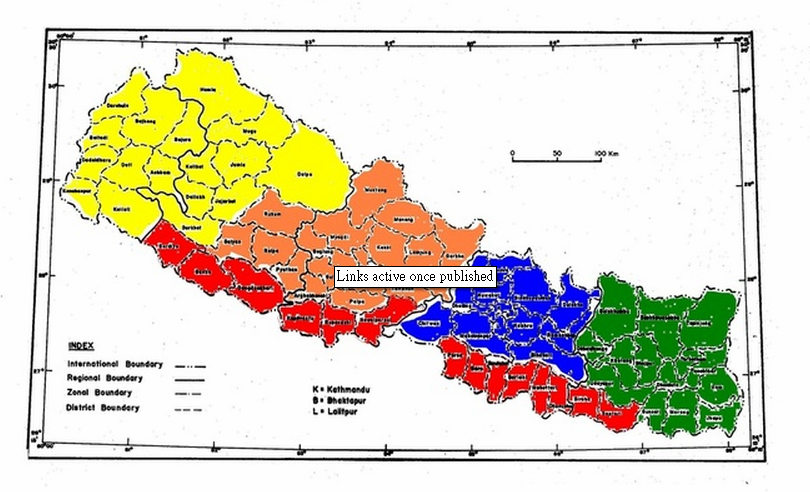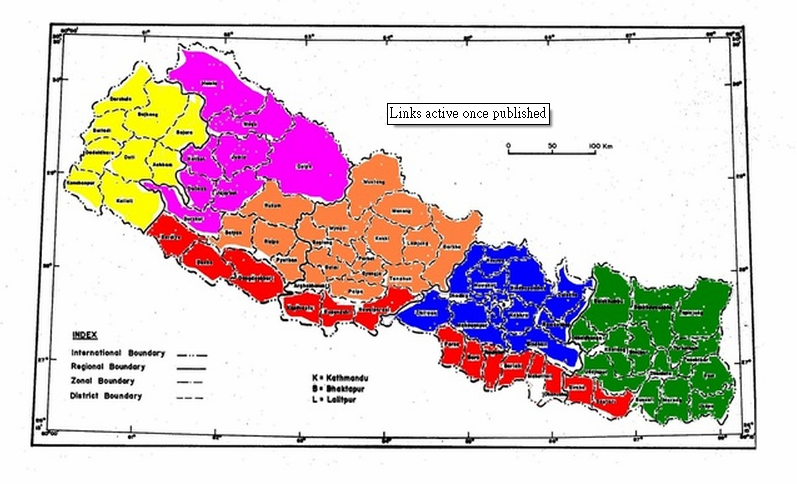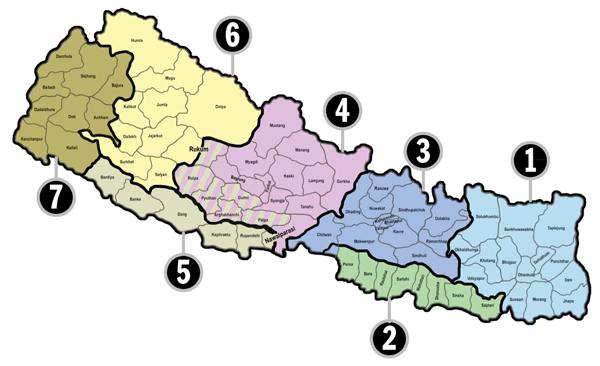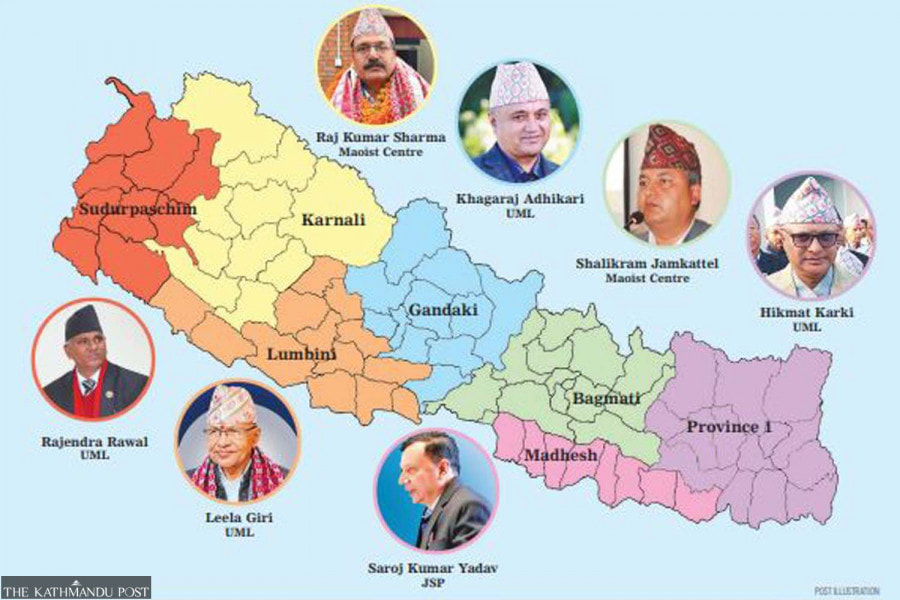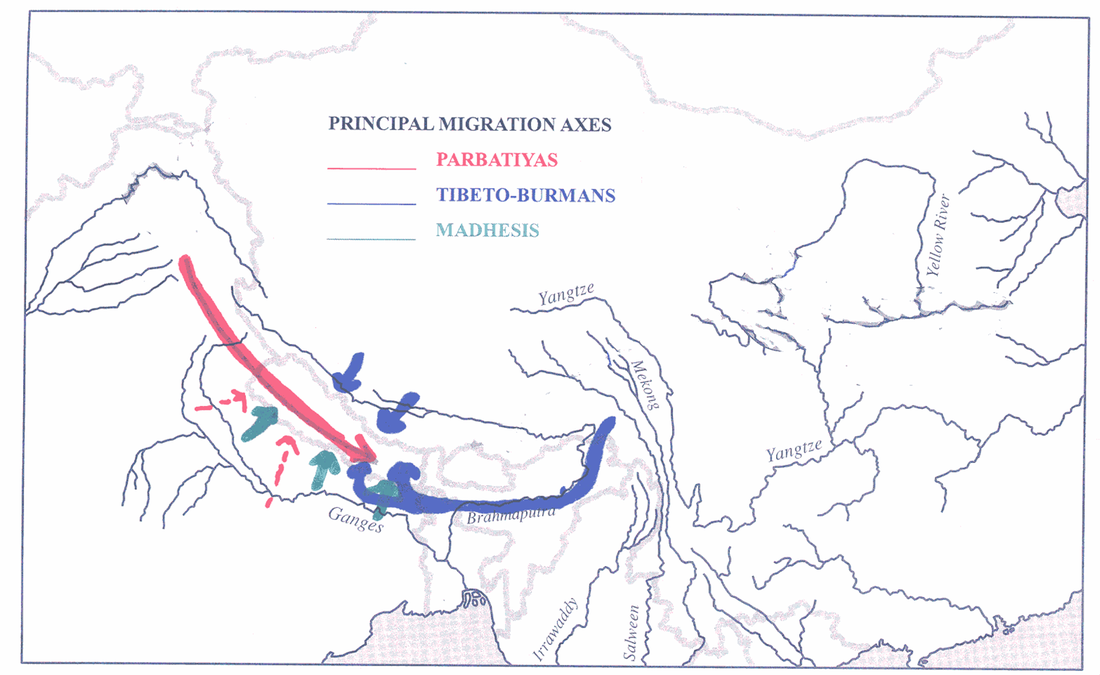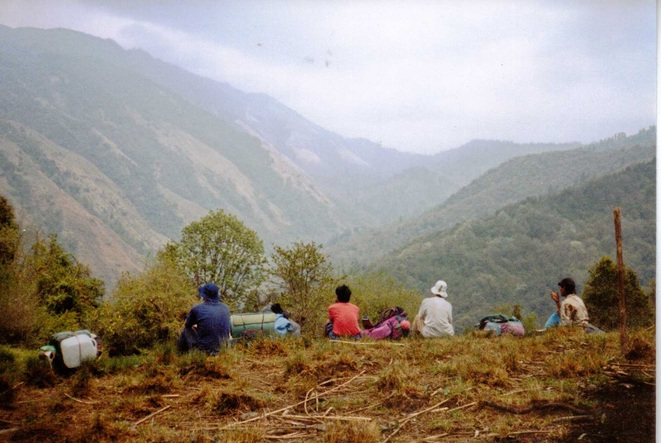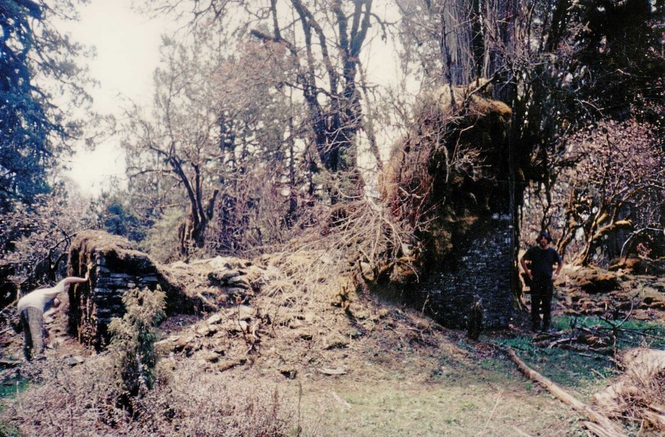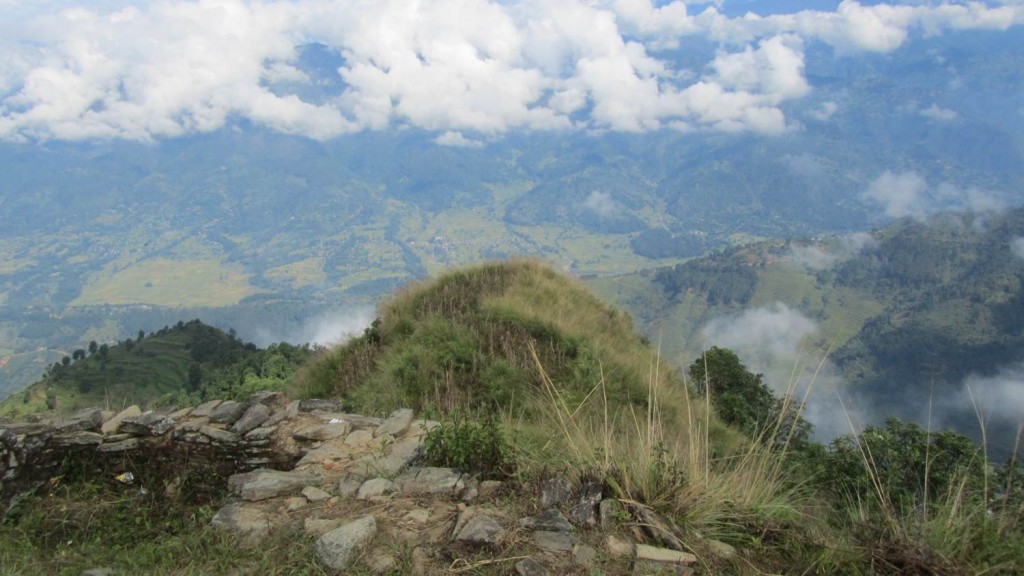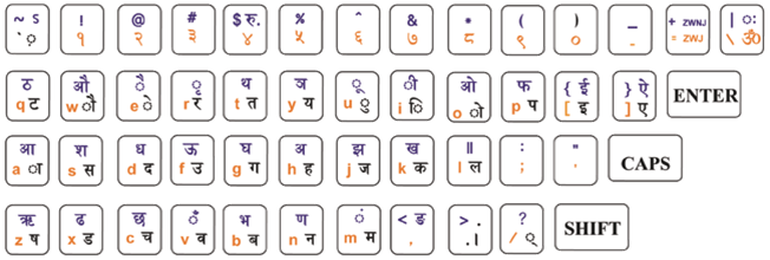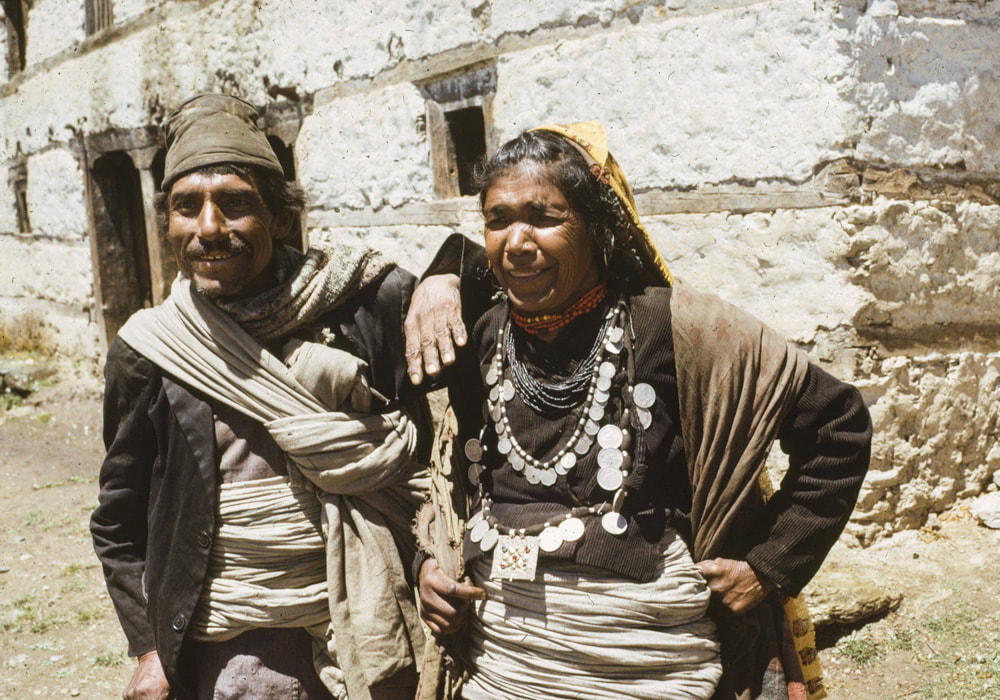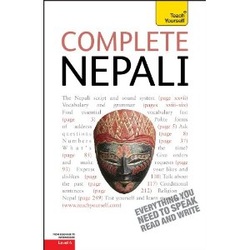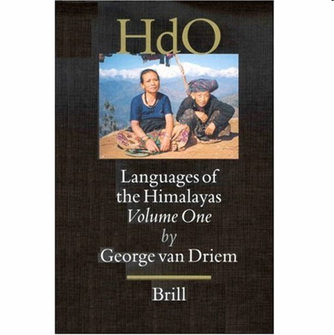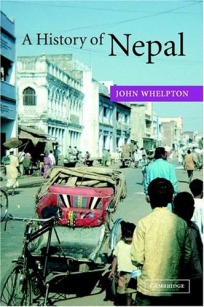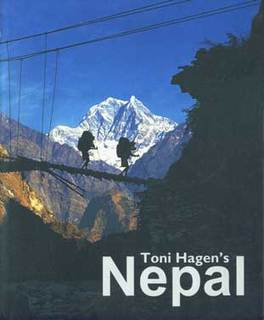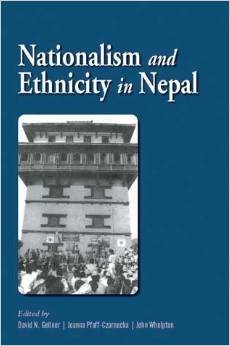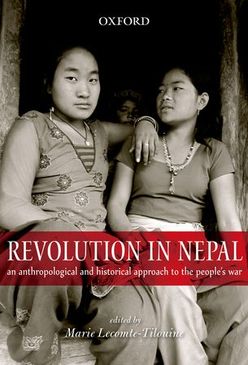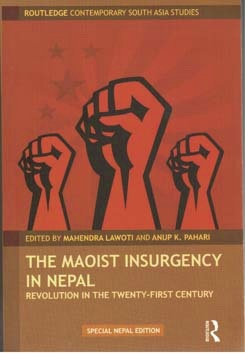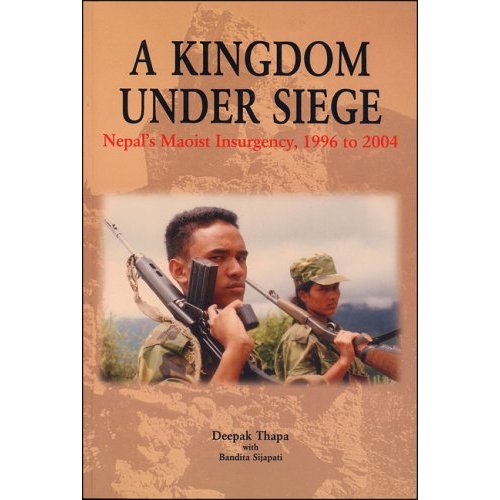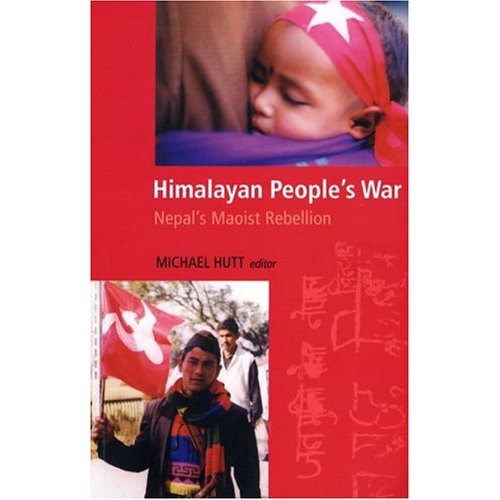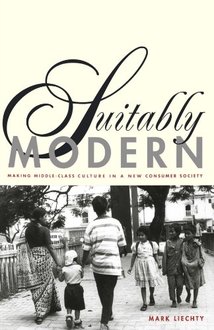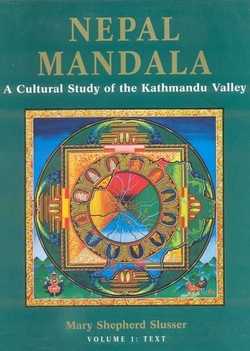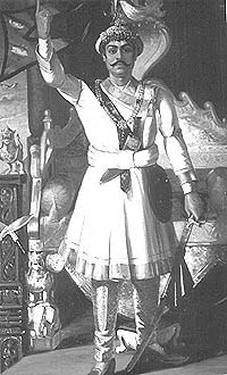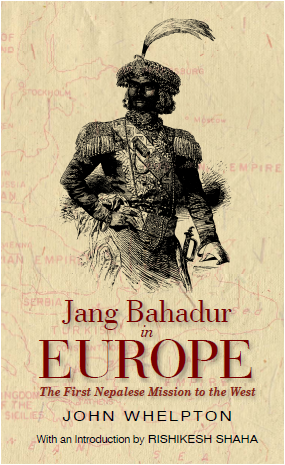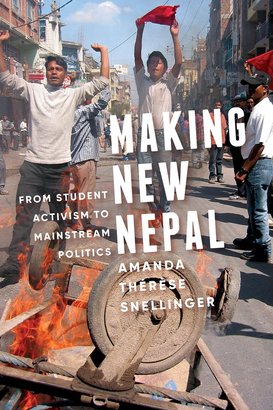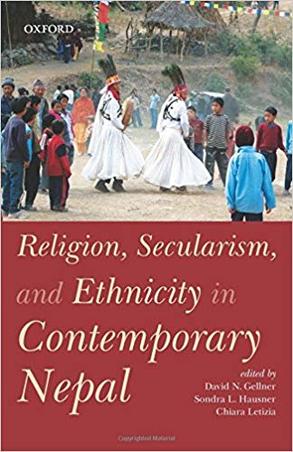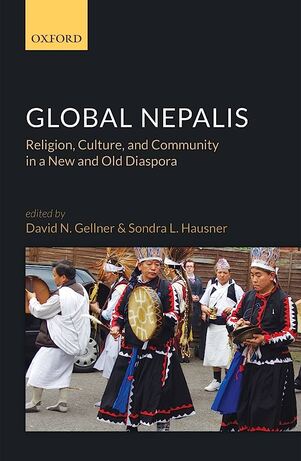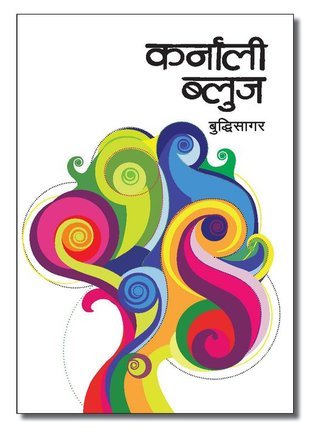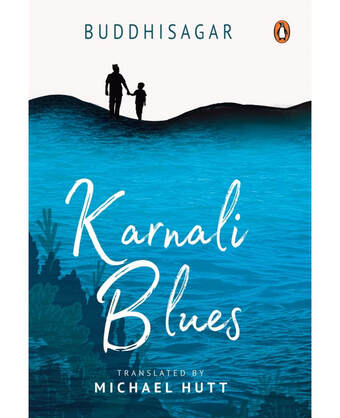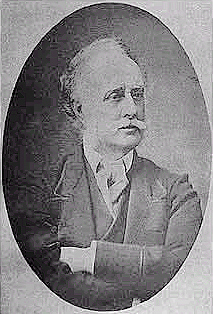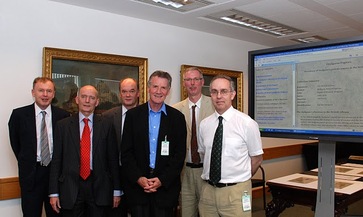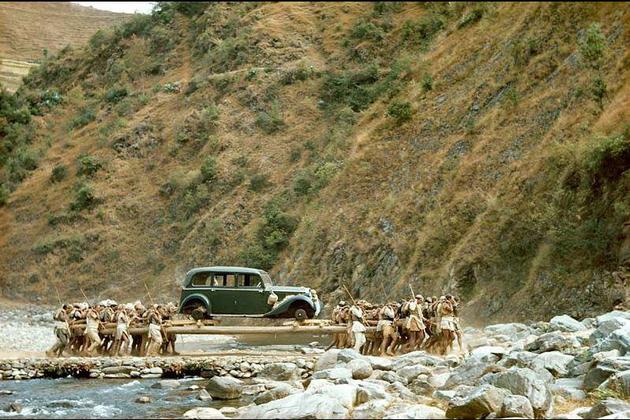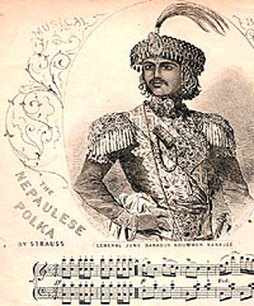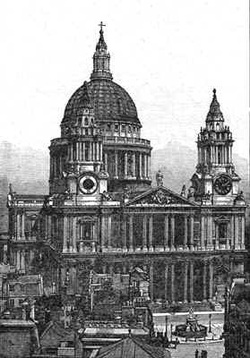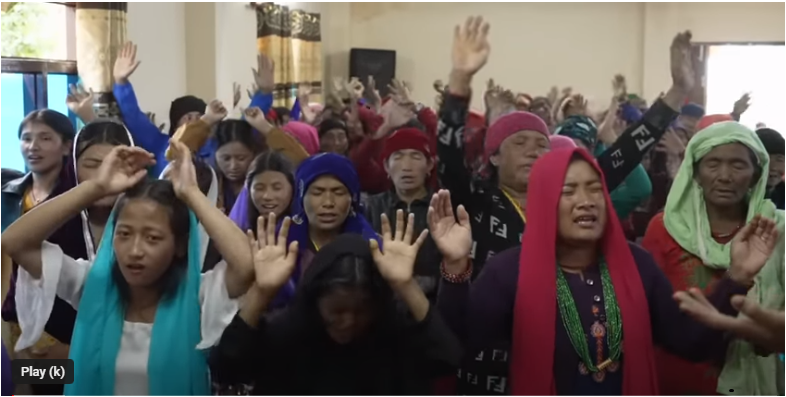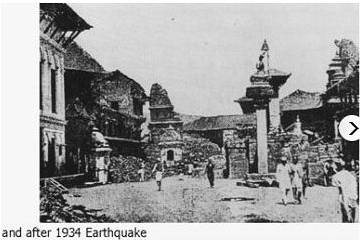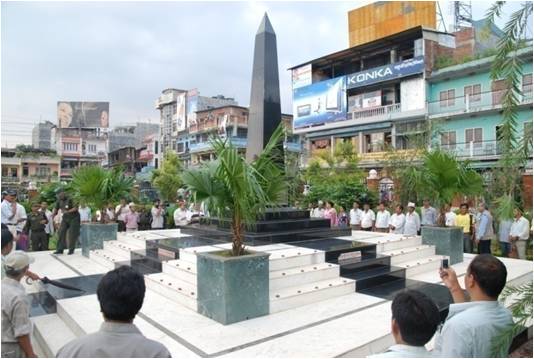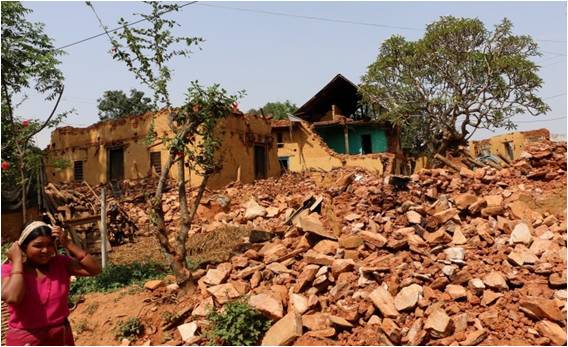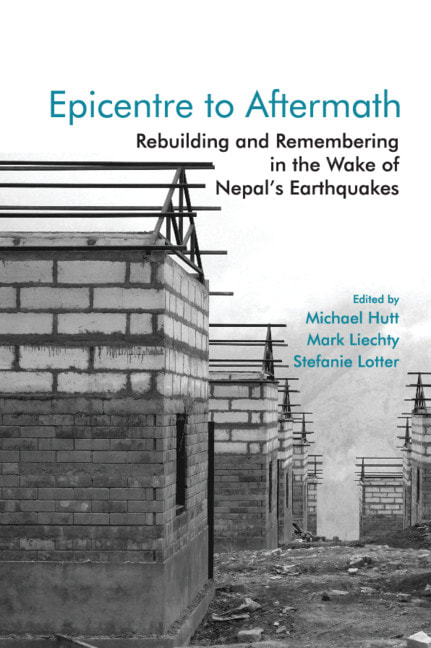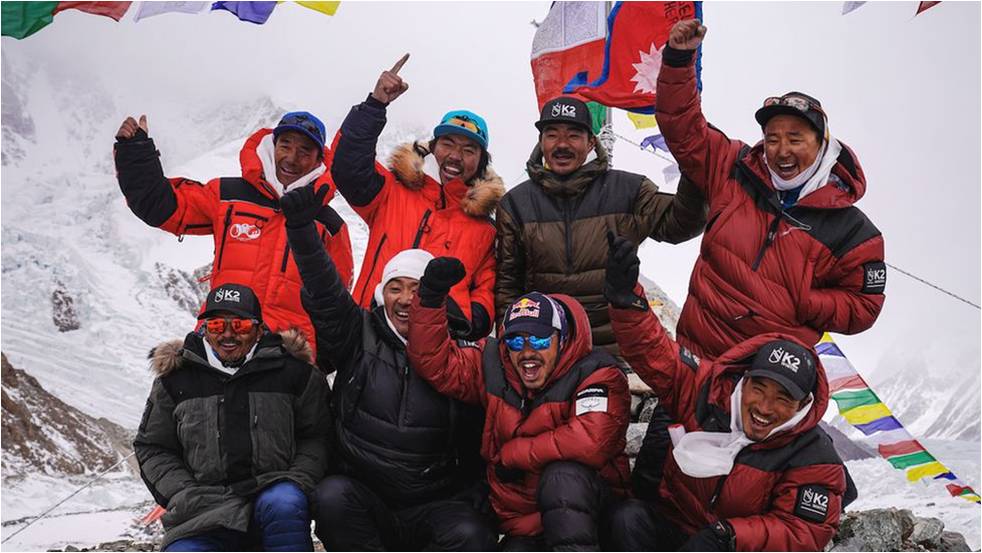| linguae |
|
- HOME
-
LATIN & GREEK
-
CIRCULUS LATINUS HONCONGENSIS
>
- ORATIO HARVARDIANA 2007
- NOMEN A SOLEMNIBUS
- CARMINA MEDIAEVALIA
- BACCHIDES
- LATIN & ANCIENT GREEK SPEECH ENGINES
- MARCUS AURELIUS
- ANGELA LEGIONEM INSPICIT
- REGINA ET LEGATUS
- HYACINTHUS
- LATINITAS PONTIFICALIS
- SINA LATINA >
- MONUMENTA CALEDONICA
- HISTORIA HONCONGENSIS
- ARCADIUS AVELLANUS
- LONDINIUM
- ROMAN CALENDAR
- SOMNIUM
- CIRCULUS VOCABULARY
- HESIOD
- CONVENTUS FEBRUARIUS (I)
- CONVENTUS FEBRUARIUS (II)
- CONVENTUS MARTIUS
- CONVENTUS APR 2018
- CONVENTUS APRILIS
- CONVENTUS MAIUS
- CONVENTUS IUNIUS
- CONVENTUS IULIUS
- CONVENTUS SEPT 2017
- CONVENTUS OCT 2017
- CONVENTUS NOV 2017
- CONVENTUS DEC 2017
- CONVENTUS DEC 2017 (II)
- CONVENTUS JAN 2018
- CONVENTUS FEB 2018
- CONVENTUS MAR 2018
- CONVENTUS MAIUS 2018
- CONVENTUS IUN 2018
- CONVENTUS IUL 2018
- CONVENTUS SEPT 2018
- CONVENTUS OCT 2018
- CONVENTUS NOV 2018
- CONVENTUS DEC 2018
- CONVENTUS NATIVITATIS 2018
- CONVENTUS IAN 2019
- CONVENTUS FEB 2019
- CONVENTUS MAR 2019
- CONVENTUS APR 2019
- CONVENTUS MAIUS 2019
- CONVENTUS IUN 2019
- CONVENTUS IULIUS 2019
- CONVENTUS SEP 2019
- CONVENTUS OCT 2019
- CONVENTUS NOV 2019
- CONVENTUS DEC 2019
- CONVENTUS JAN 2020
- CONVENTUS FEB 2020
- CONVENTUS MAR 2020
- CONVENTUS APR 2020
- CONVENTUS IUL 2020
- CONVENTUS SEP 2020 (I)
- CONVENTUS SEPT 2020 (II)
- CONVENTUS OCT 2020
- CONVENTUS NOV 2020
- CONVENTUS IAN 2021
- CONVENTUS IUN 2021
- CONVENTUS IULIUS 2021
- CONVENTUS AUG 2021
- CONVENTUS SEPT 2021
- CONVENTUS OCT 2021
- CONVENTUS NOV 2021
- CONVENTUS FEB 2022 (1)
- CONVENTUS FEB 2022 (2)
- CONVENTUS MAR 2022
- CONVENTUS APRILIS 2022
- CONVENTUS MAIUS 2022
- CONVENTUS IUN 2022
- CONVENTUS IUL 2022
- CONVENTUS SEP 2022
- CONVENTUS OCT 2022
- CONVENTUS NOV 2022
- CONVENTUS DEC 2022
- CONVENTUS IAN 2023
- CONVENTUS FEB 2023
- CONVENTUS MARTIUS 2023
- CONVENTUS APRIL 2023
- CONVENTUS MAIUS 2023
- CONVENTUS IUN 2023
- CONVENTUS IUL 2023
- CONVENTUS SEP 2023
- CONVENTUS OCT 2023
- CONVENTUS IAN 2024
- CONVENTUS MARTIUS (I) 2024
- RES GRAECAE >
-
IN CONCLAVI SCHOLARI
>
- LATIN I
- LATIN I (CAMBRIDGE)
- LATIN II (CAMBRIDGE)
- LATIN II (MON)
- LATIN II (SAT)
- LATIN III (MON)
- LATIN III (SAT)
- LATIN IV
- LATIN TEENAGERS I
- LATIN TEENAGERS II
- LATIN TEENAGERS III
- LATIN TEENAGERS IV
- LATIN TEENAGERS V
- LATIN TEENAGERS VI
- LATIN TEENAGERS VII
- LATIN TEENAGERS VIII
- LATIN TEENAGERS IX
- LATIN TEENAGERS X
- LATIN TEENAGERS XI
- LATIN SPACE I
- LATIN SPACE II
- LATIN SPACE III
- LATIN SPACE IV
- CARPE DIEM
- INITIUM ET FINIS BELLI
- EPISTULA DE EXPEDITIONE MONTANA
- DE LATINE DICENDI NORMIS >
- ANECDOTA VARIA
- RES HILARES
- CARMINA SACRA
- CORVUS CORAX
- SEGEDUNUM
- VIDES UT ALTA STET NIVE
- USING NUNTII LATINI
- FLASHCARDS
- CARMINA NATIVITATIS
- CONVENTUS LATINITATIS VIVAE >
- CAESAR
- SUETONIUS
- BIBLIA SACRA
- EUTROPIUS
- CICERO
- TACITUS
- AFTER THE BASICS
- AD ALPES
- LIVY
- PLINY
- OVID
- AENEID IV
- AENEID I
- QUAE LATINITAS SIT MODERNA
-
CIRCULUS LATINUS HONCONGENSIS
>
-
NEPALI
- CORRECTIONS TO 'A HISTORY OF NEPAL'
- GLOBAL NEPALIS
- NEPALESE DEMOCRACY
- CHANGE FUSION
- BRIAN HODGSON
- KUSUNDA
- JANG BAHADUR IN EUROPE
- ANCESTORS OF JANG
- SINGHA SHAMSHER
- RAMESH SHRESTHA
- RAMESH SHRESTHA (NEPALI)
- NEPALIS IN HONG KONG
- VSO REMINISCENCES
- BIRGUNJ IMPRESSIONS
- MADHUSUDAN THAKUR
- REVOLUTION IN NEPAL
- NEPAL 1964-2014
- BEING NEPALI
- EARTHQUAKE INTERVIEW
- ARCHIVES IN NEPAL
- FROM THE BEGINNING
- LIMITS OF NATIONALISM
- REST IS HISTORY FOR JOHN WHELPTON
- LIMPIYADHURA AND LIPU LEKH
- BHIMSEN THAPA AWARD LECTURE
- HISTORICAL FICTION
- READING GUIDE TO NEPALESE HISTORY
- LANGUAGES OF THE HIMALAYAS
- REVIEW OF LAWOTI (2007)
- ROMANCE LANGUAGES
-
English
- VIETNAM REFLECTIONS
- GRAMMAR POWERPOINTS
- PHONETICS POWERPOINTS
- MAY IT BE
- VILLAGE IN A MILLION
- ENGLISH RHETORIC
- BALTIC MATTERS
- SHORT STORIES QUESTIONS
- WORD PLAY
- SCOTS
- INTERNATIONAL SCHOOLS
- STORY OF NOTTINGHAM
- MEET ME BY THE LIONS
- MNEMONICS
- ALTITUDE
- KREMLIN'S SUICIDAL IMPERIALISM
- CLASSROOM BATTLEFIELD
- MATHEMATICS AND HISTORICAL LINGUISTICS
- OLD TESTAMENT INJUNCTIONS
- KUIRE ORIGINS
- BALTI
- CUBA
- JINNAH AND MODERN PAKISTAN
- ENGLISH IS NOT NORMAL
- HKAS
Friends of Nepal - 2023 Project Grants
Responses due by July 31, 2023
2023 Grant Theme Summary
Friends of Nepal (FoN) is opening its grant application period and will be supporting initiatives that address one or more of the following themes: A. Climate Change, B. Natural Resource Conservation, and C. Sustainability. Over the years, many of our selected projects have overlapped with environmental causes. For example, one of our partner organizations, Himalayan Healthcare, provided agricultural training in northern Dhading to women who suffered from the economic fallout caused by the Covid pandemic. Not only did this benefit the environment, it also supported the entrepreneurial pursuits of women as they worked to recover from the losses of the past years. More recently, partner CBODC has taken a multi-faceted approach to supporting remote communities on the border between Kailali and Doti through agricultural diversification and income generation, water conservation, and indoor air qualityimprovements.
Climate change and environmental degradation loom large in the agricultural and economic fate of Nepal. Many Volunteers have witnessed villages scramble to repair the damage caused by heavy rainfall, hail, or a landslide, and subsistence farming is becoming more difficult in an unpredictable climate. Erratic weather events have increasingly affected farmers as well as others in the community. Last year, a USAID spokesperson remarked, “...erosion from mountains, heavy monsoon rains, uncontrolled burning, and forest fires make the country especially vulnerable to climate change. Climate change poses a direct threat to Nepal’s remarkable biodiversity and cultural traditions.” This year too fires have continued to rage across Nepal contributing to some of the worst air pollution in recent memory and not just in urban areas.
Prior to our current focus on Climate Change, Natural Resource Conservation, and Sustainability, FoN grants focused on efforts in support of girls’ learning. Increasing girls’ participation in education and improving the quality of their participation is an on-going challenge for Nepal’s educational system. FoN therefore particularly encourages applications that include support for girls’ learning as a component of the proposal. We will also give special consideration to projects that simultaneously address climate change, natural resource conservation, and sustainability as well as economic
development. For example, how might a school science club (girls and boys) engage with their community in developing a climate-smart technique that can become a potential income source for some members of the community?
More examples of projects we are interested in sponsoring are:
● Natural Resource Management,
● Natural Disaster Mitigation,
● Efforts to Protect Land and Wildlife,
● Educational Programs that engage students in local climate change mitigation and
conservation activities,
● Waste Management: Projects to reduce open defecation, and improve community
hygiene; this could also focus on community management of solid waste and
recycling efforts,
● Seed Saving, Soil Improvements, Home Gardens, and other Sustainable Farming
Methods,
● Pollution Mitigation (air, water, soil etc.).
Eligibility
● Non-profit organizations, schools, and community groups are welcome to apply.
● Friends of Nepal generally does not provide scholarships to individuals.
● Friends of Nepal prefers to work with organizations with a proven track record.
● We particularly encourage proposals that implement activities in remote areas
and/or among disadvantaged populations.
● Organizations must be based in either the United States or Nepal, and be providing
direct services in Nepal/have authorization from the government of Nepal.
● Beneficiaries of the project must be actively involved, as demonstrated by donations
of volunteer labor, materials, or money.
● Projects must be sponsored by an active Friends of Nepal member who has
significant ties to Nepal. The sponsor has until the application due date to join FoN.
The organization applying must submit a letter of recommendation from the sponsor
along with the proposal. Please see the Sponsor Role and Responsibilities section
below. Any potential sponsor must read the Role and Responsibilities section before
agreeing to sponsor.
● If you don’t meet these criteria, but still feel that your project merits consideration,
you may email the Grants Committee Chairperson at [email protected].
FOR FULL DETAILS SEE THE FILE BELOW
2023 Grant Theme Summary
Friends of Nepal (FoN) is opening its grant application period and will be supporting initiatives that address one or more of the following themes: A. Climate Change, B. Natural Resource Conservation, and C. Sustainability. Over the years, many of our selected projects have overlapped with environmental causes. For example, one of our partner organizations, Himalayan Healthcare, provided agricultural training in northern Dhading to women who suffered from the economic fallout caused by the Covid pandemic. Not only did this benefit the environment, it also supported the entrepreneurial pursuits of women as they worked to recover from the losses of the past years. More recently, partner CBODC has taken a multi-faceted approach to supporting remote communities on the border between Kailali and Doti through agricultural diversification and income generation, water conservation, and indoor air qualityimprovements.
Climate change and environmental degradation loom large in the agricultural and economic fate of Nepal. Many Volunteers have witnessed villages scramble to repair the damage caused by heavy rainfall, hail, or a landslide, and subsistence farming is becoming more difficult in an unpredictable climate. Erratic weather events have increasingly affected farmers as well as others in the community. Last year, a USAID spokesperson remarked, “...erosion from mountains, heavy monsoon rains, uncontrolled burning, and forest fires make the country especially vulnerable to climate change. Climate change poses a direct threat to Nepal’s remarkable biodiversity and cultural traditions.” This year too fires have continued to rage across Nepal contributing to some of the worst air pollution in recent memory and not just in urban areas.
Prior to our current focus on Climate Change, Natural Resource Conservation, and Sustainability, FoN grants focused on efforts in support of girls’ learning. Increasing girls’ participation in education and improving the quality of their participation is an on-going challenge for Nepal’s educational system. FoN therefore particularly encourages applications that include support for girls’ learning as a component of the proposal. We will also give special consideration to projects that simultaneously address climate change, natural resource conservation, and sustainability as well as economic
development. For example, how might a school science club (girls and boys) engage with their community in developing a climate-smart technique that can become a potential income source for some members of the community?
More examples of projects we are interested in sponsoring are:
● Natural Resource Management,
● Natural Disaster Mitigation,
● Efforts to Protect Land and Wildlife,
● Educational Programs that engage students in local climate change mitigation and
conservation activities,
● Waste Management: Projects to reduce open defecation, and improve community
hygiene; this could also focus on community management of solid waste and
recycling efforts,
● Seed Saving, Soil Improvements, Home Gardens, and other Sustainable Farming
Methods,
● Pollution Mitigation (air, water, soil etc.).
Eligibility
● Non-profit organizations, schools, and community groups are welcome to apply.
● Friends of Nepal generally does not provide scholarships to individuals.
● Friends of Nepal prefers to work with organizations with a proven track record.
● We particularly encourage proposals that implement activities in remote areas
and/or among disadvantaged populations.
● Organizations must be based in either the United States or Nepal, and be providing
direct services in Nepal/have authorization from the government of Nepal.
● Beneficiaries of the project must be actively involved, as demonstrated by donations
of volunteer labor, materials, or money.
● Projects must be sponsored by an active Friends of Nepal member who has
significant ties to Nepal. The sponsor has until the application due date to join FoN.
The organization applying must submit a letter of recommendation from the sponsor
along with the proposal. Please see the Sponsor Role and Responsibilities section
below. Any potential sponsor must read the Role and Responsibilities section before
agreeing to sponsor.
● If you don’t meet these criteria, but still feel that your project merits consideration,
you may email the Grants Committee Chairperson at [email protected].
FOR FULL DETAILS SEE THE FILE BELOW
| 2023_friends_of_nepal_rfp.pdf | |
| File Size: | 371 kb |
| File Type: | |
Covid Emergency
Nepal is currently battling a surge of Covid-19 infections that has overwhelmed the health system, with many patients unable to get vitally needed oxygen. If you wish to help financially, donations can be received on these sites:
America Nepal Medical Foundation (donations via PayPal but may not work from Hong Kong)
Oxygen Cylinders for Nepal (donations via major credit cards on the Go Fund Me platform)
Oxygen for Nepal (donations have to be made direct to a bank account in Nepal)
https://uk.gofundme.com/f/henn-appeals-for-the-nic-nepalcovid-initia Mahabir Pun's National Innovation Centre, which is repairing machines and equipment etc.)the
https://www.gofundme.com/f/f4kk2-oxygen-for-nepal (appeal organised by Merging Nepalsoc, a confederation of Nepali Students Societies in UK universities)
http://www.britainnepalmedicaltrust.org.uk/ (donations via regular credit cards on the Charities Aid Foundation platform. BNMT are a reliable organisation with over sixty years experience working in Nepal; currently have been working to upgrade the government's IT capability to help manage the outbreak and they will shortly be announcing other initiatives)
https://www.gofundme.com/f/help-nepal-during-covid19-surge (organised by Rijesh Rjkarnikar from California)
America Nepal Medical Foundation (donations via PayPal but may not work from Hong Kong)
Oxygen Cylinders for Nepal (donations via major credit cards on the Go Fund Me platform)
Oxygen for Nepal (donations have to be made direct to a bank account in Nepal)
https://uk.gofundme.com/f/henn-appeals-for-the-nic-nepalcovid-initia Mahabir Pun's National Innovation Centre, which is repairing machines and equipment etc.)the
https://www.gofundme.com/f/f4kk2-oxygen-for-nepal (appeal organised by Merging Nepalsoc, a confederation of Nepali Students Societies in UK universities)
http://www.britainnepalmedicaltrust.org.uk/ (donations via regular credit cards on the Charities Aid Foundation platform. BNMT are a reliable organisation with over sixty years experience working in Nepal; currently have been working to upgrade the government's IT capability to help manage the outbreak and they will shortly be announcing other initiatives)
https://www.gofundme.com/f/help-nepal-during-covid19-surge (organised by Rijesh Rjkarnikar from California)
The Nepali Language
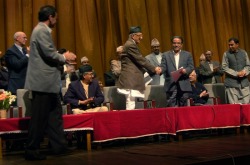
Nepali is spoken as either mother tongue or second language by most of the inhabitants of Nepal (approx. population 26.5 million) and by several millions more elsewhere in the Eastern Himalaya and on the Indian plains. It is closely related to Hindi and is written in the same Devanagari script. The best online resource for learning the basics of the language is Cornell University's `Nepali: a Beginner's Primer Conversation and Grammar,' which includes audio and video components and is available free-of-charge. The materials use the Devanagari script from the start but those who find this difficult can get extra help from London University's online introduction to Devanagari, intended specifically for those beginning Hindi but also useful for students of Nepali, which includes demonstrations of how to write each character and also recordings of their sounds.
Other resources include basic sentences for greetings, expressing thanks, exchanging basic personal information etc. demonstrated on the Youtube video `Learn Nepali Language' and a basic Nepali-English on-line dictionary (as a pdf file) compiled by Karl-Heinz Krämer, with words arranged alphabetically in Romanisation but Devanagari transcription also given. A Foundation in Nepali Grammar by Christopher Jay Manders (Bloomington, Indiana: AuthorHouse, 2007), which provides a systematic treatment of the grammar intended as a suplement to other courses, is available in large part online. An excellent dictionary for learners, now freely available on the University of Chicago's `Digital Dictionaries of South Asia' site, is Ruth Laila Schmidt's Practical Dictionary of Modern Nepali. Words can be searched for in Devanagari or in a transcription using double letters for long vowels and capitals for retroflex consonants, whilst the entries themselves also give the standard Indological transcription for words taken unaltered from Sanskrit. There is also a digitalised version of Sir Ralph Turner's classic 1931 dictionary, excellent for the colloquial language and for etymological information but lacking some of the Sanskrit terms used in modern literary Nepali. It is necessary to enter words either in the standard Indological transcription (minus diacritics) or in Devanagari script.
In addition to Nepali itself, Nepal is home to a plethora of other languages and dialects, of which the most widely spoken are Maithili and Tamang, whilst Newar(i), the indigenous language of the Kathmandu valley, is of immense historical and cultural importance. The oldest language is probably Kusunda, now on the verge of extinction
The illustration shows the signing of the 2006 Comprehensive Peace Agreement between the interim government headed by Girija Koirala and the Maoist leader Pushpa Kumar Dahal several months after Janandolan (`People's Movement') II had forced King Gyanendra to return power to parliament. Girija Koirala died on 21 March 2010 after over sixty years' active participation in Nepalese politics and five terms as prime minister. Obituaries by Kunda Dixit and by myself are available on-line. A Powerpoint presentation on political developments in Nepal up to the fall of the monarchy can be downloaded here. Those who know some Nepali already may be interested in hearing the former king giving slow and careful answers during a March 2010 interview. An extensive profile of Dahal (`Prachanda')'s career is provided in Deepak Adhikari's `The Fierce One' (February 2013) and an overview of the Maoists' role since the peace agreement is provided in Aditya Adhikari's `Discontents after the Revolution', published the same month.
Nepal: Major Rivers and Towns
Nepal: Administrative Divisions before implementation of Federalism under the 2015 Constitution
2015 EARTHQUAKE
For work under the SWAY project, which is investigating the social, political and cultural effects of the earthquake, with a secondary focus on earlier ones, see the section at the bottom of this page.
This YouTube video presents a recording (sound only) of a discussion between prominent scholars working on Nepal. analysis by leading anthropologists of Nepal can be accessed at http://www.culanth.org/fieldsights/741-aftershocked-reflections-on-the-2015-earthquakes-in-nepal
Federal Nepal
Although Nepal has been officially known as `The Federal Democratic Republic of Nepal' since shortly after the fall of the monarchy, the number of federal units and their boundaries have remained a matter of controversy. The first two maps below show the structures proposed by the State Restructuring Committee in 2010 and by the High Level state Restructuring Commission, a body of experts which reported in January 2012, whilst the third shows the arrangement agreed by leaders of the three main political parties at their meeting on 15 May 2012 but then almost immediately rejected by the Maoists as well as janajati groups.
State Restructuring Committee Proposal (January 2010)
State Restructuring Committee Proposal (January 2010)
High-Level State Restructuring Commission Proposal (January 2012)
Structure as agreed by leaders of political parties on 15 May 2012
_ The HLSRC recommendations differ from those
of the SRC principally in merging the proposed Sherpa, Sunkoshi and Kirat
states to form a single Kirat unit, the amalgamation of Jadan (intended as a
homeland for groups speaking various Tibetan dialects) Karnali and Khaptad into
a single Khaptas-Karnali province and major alterations to the boundaries originally proposed for Narayani. This would give a common boundary to the two proposed tarai (southern plains) states and this, in addition to the changes in name to `Madesh-Awadh-Tharuwan' and `Madesh-Mithila-Bhojpura' is presumably intended in part as a concession to tarai regionalist parties which had been demanding `a single Madesh' comprising the whole tarai. The commission also recommended
the creation of an eleventh `non-territorial’ state for dalits
(`Untouchable’ castes).
The HLSRC map was kindly made available by commission member Professor Krishna Hachhethu.
The third, unofficial map, entitled `These are the states pulled out of the leaders pockets!' and `Federal Panchayati Arbitraricratic Nepal' was posted on Facebook on 16 May but swiftly removed. The map's author suggests the structure is not really based on ethnic identity but on administrative divisions dating from the Panchayat era of royal rule and that the whole exercise is being orchestrated by India. Krishna Hachhethu's analysis suggests that these boundaries do indeed normally ensure that the Parbatiyas (rather than any other ethnic group) would form a plurality within each state. The names shown on the individual states (e.g. `Divided Madhesh') are also satirical inventions; the actual names of the units are to be decided later. The agreement between the parties was in fact that the boundaries as shown on the map would be subject to adjustment if recommended by a federal commission for which provision will be made in the constitution. The commission's recommendations would have to be voted on by parliament and the names adopted could be changed by the individual state assemblies once they are elected. There might also be a referendum to see whether Kailali and Kanchanpur remain part of an `undivided far west', as envisaged on the map, or join the western Tarai state. Following the 2013 election victory of the Nepali Congress and the UML, both of who are opposed to identity-based federalism, Congress suggested two slightly different models similar to the May 2012 agreement but with only six or seven provinces (maps based on Suresh Maharjan's work for S.H. Shrestha, Nepal in Maps, Educational Enterprises, 1988). The following month, the seven-province model, with some changes of names, was included in the joint constitutional proposals submitted jointly by Congress and the UML to the Constitutional Political Dialogue and Consensus Committee:
Congress 6-province model( October 2014)
KEY: EASTERN PROVINCE EASTERN TARAI PROVINCE CAPITAL PROVINCE
WESTERN PROVINCE WESTERN TARAI PROVINCE FAR-WESTERN PROVINCE
The HLSRC map was kindly made available by commission member Professor Krishna Hachhethu.
The third, unofficial map, entitled `These are the states pulled out of the leaders pockets!' and `Federal Panchayati Arbitraricratic Nepal' was posted on Facebook on 16 May but swiftly removed. The map's author suggests the structure is not really based on ethnic identity but on administrative divisions dating from the Panchayat era of royal rule and that the whole exercise is being orchestrated by India. Krishna Hachhethu's analysis suggests that these boundaries do indeed normally ensure that the Parbatiyas (rather than any other ethnic group) would form a plurality within each state. The names shown on the individual states (e.g. `Divided Madhesh') are also satirical inventions; the actual names of the units are to be decided later. The agreement between the parties was in fact that the boundaries as shown on the map would be subject to adjustment if recommended by a federal commission for which provision will be made in the constitution. The commission's recommendations would have to be voted on by parliament and the names adopted could be changed by the individual state assemblies once they are elected. There might also be a referendum to see whether Kailali and Kanchanpur remain part of an `undivided far west', as envisaged on the map, or join the western Tarai state. Following the 2013 election victory of the Nepali Congress and the UML, both of who are opposed to identity-based federalism, Congress suggested two slightly different models similar to the May 2012 agreement but with only six or seven provinces (maps based on Suresh Maharjan's work for S.H. Shrestha, Nepal in Maps, Educational Enterprises, 1988). The following month, the seven-province model, with some changes of names, was included in the joint constitutional proposals submitted jointly by Congress and the UML to the Constitutional Political Dialogue and Consensus Committee:
Congress 6-province model( October 2014)
KEY: EASTERN PROVINCE EASTERN TARAI PROVINCE CAPITAL PROVINCE
WESTERN PROVINCE WESTERN TARAI PROVINCE FAR-WESTERN PROVINCE
Congess 7-province model (subsequently made the basis of joint Congress-UML proposal)
KEY: SAGARMATHA PROVINCE JANAKI PROVINCE BAGMATI PROVINCE
GANDAKI PROVINCE LUMBINI PROVINCE KHAPTAD PROVINCE
KARNALI PROVINCE
Following an agreement with the Maoists and one Tarai grouping in June 2015, the coalition government tabled a draft constitution which included an 8-state (subsequently amended to 6 then to 7)-state federal model. This was condemned by ethnic activists and sparked violent protests in the Tarai in August, the most serious, in Tikapur in Kailalai, rsulting in the death of seven policemen and a child. The map below (from the Kathmandu Post of 24 August) shows the proposed structure, which involves the merger of most of the Tarai with neighbouring hill districts, with sites of major early clashes. Unrest later spread to most of the Tarai, including Birgunj and Janakpur:
Some other models suggested earlier are included in a slide presentation from Himalayan Voice but unfortunately without labelling.
Despite the tarai's opposition, the boundaries shown in the above map remained largely unaltered and adoption of the draft constitution enshrining them was completed by a two-thirds majority of the Constituent Assembly on 16 September 2015. The only alteration had been the decision to put all of Baglung district into the 4th province rather than give the western section to the 5th. Following the official promulgation of the constitution on 20 September, the entry of trucks into Nepal carrying supplies from India was curtailed, causing shortages in the hills, particularly in the Kathmandu valley. The Nepal government denounced this as an Indian `blockade' designed to force concessions to the Madhesi parties, whist the Indian authorities claimed that the usual number of vehicles were not able to enter Nepal because of the on-going protests. The activists blocking the crossing between Rexaul and Birgunj were finally cleared and normal supplies resumed in February 2016
On 29 November the Maoist-Congress coalition which had replaced the UML-led government in August registered an amendment transferring from province 5 to province 4 the hill districts of Rolpa, Pyuthan, Gulmi, Arghakhanchi and Palpa, plus the eastern half of Rukum (the area shown in stripes on the map below). This proposal met with strong opposition from the UML and also some activists of the ruling parties, while it was criticised by Madhesis groups for not going far enough. By the end of the year the main Madhesi block, the United Madhesis Democratic Front, had decided to back the amendment despite its unhappiness over the inclusion of the far-western and far-eastern tarai in north-south provinces but the UML remained adamantly opposed and continued to block proceedings in parliament. The 1st amendment to the constitution, passed in January 2016, mandated population rather than geography as the first principle in drawing constituencies boundaries (one of the Madhesi demands) but did not include any re-drawing of provincial boundaries.
Despite the tarai's opposition, the boundaries shown in the above map remained largely unaltered and adoption of the draft constitution enshrining them was completed by a two-thirds majority of the Constituent Assembly on 16 September 2015. The only alteration had been the decision to put all of Baglung district into the 4th province rather than give the western section to the 5th. Following the official promulgation of the constitution on 20 September, the entry of trucks into Nepal carrying supplies from India was curtailed, causing shortages in the hills, particularly in the Kathmandu valley. The Nepal government denounced this as an Indian `blockade' designed to force concessions to the Madhesi parties, whist the Indian authorities claimed that the usual number of vehicles were not able to enter Nepal because of the on-going protests. The activists blocking the crossing between Rexaul and Birgunj were finally cleared and normal supplies resumed in February 2016
On 29 November the Maoist-Congress coalition which had replaced the UML-led government in August registered an amendment transferring from province 5 to province 4 the hill districts of Rolpa, Pyuthan, Gulmi, Arghakhanchi and Palpa, plus the eastern half of Rukum (the area shown in stripes on the map below). This proposal met with strong opposition from the UML and also some activists of the ruling parties, while it was criticised by Madhesis groups for not going far enough. By the end of the year the main Madhesi block, the United Madhesis Democratic Front, had decided to back the amendment despite its unhappiness over the inclusion of the far-western and far-eastern tarai in north-south provinces but the UML remained adamantly opposed and continued to block proceedings in parliament. The 1st amendment to the constitution, passed in January 2016, mandated population rather than geography as the first principle in drawing constituencies boundaries (one of the Madhesi demands) but did not include any re-drawing of provincial boundaries.
An agitation by Madhes parties to force further concessions involved the blocking of shipments into Nepal from India, with covert support from the Indian government, was abandoned in February 2016. Although the door to boundary adjustments was theoretically left open, the victory of the UML-Maoist alliance in the November-December 2017 general election meant that the removal of hill districts from Province 5, which the UML had strongly opposed, was most unlikely to materialise. Pressure for ethnically-based provinces in the hills also appeared to have diminished since the Indian `blockade' had tended to solidify hill janajati support behind the 2015 constitution.
In January 2018, the Deuba government, though soon due to be replaced by the new communist coalition, announced interim provincial capitals and appointed provincial chiefs, as shown on the map below (reproduced from the Kathmandu Post web site. Note that Rupandehi and Kailali are not the capitals of provinces 5 and 7 but the districts of which the actual capitals (Dang and Dangadhi respectively) were the headquarters,
In January 2018, the Deuba government, though soon due to be replaced by the new communist coalition, announced interim provincial capitals and appointed provincial chiefs, as shown on the map below (reproduced from the Kathmandu Post web site. Note that Rupandehi and Kailali are not the capitals of provinces 5 and 7 but the districts of which the actual capitals (Dang and Dangadhi respectively) were the headquarters,
Arguments over appropriate names for the new provinces continued for an extended period but by the end of 2021 agrement had been reached in all the provincial legislatures except for Province No.1, which finally adopted the name Koshi province on 1 March 2023:
The Nepali calendar
Nepal still uses the Viram Era, which commenced in 57 B. C. and was once widely used in South Asia. The year 2068 V.E. began on 14 April 2011 and a calendar for the whole year, including dates for religious festivals which depend on the lunar months and so are on different dates in different years, can be downloaded here.
| nepali_calender_20681.pdf | |
| File Size: | 1100 kb |
| File Type: | |
The Nepali months, with the original Sanskrit names (still used in formal contexts) in Devanagari and then the present-day pronunciation of the Sanskrit and the equivalent in coloquial Nepali, are as follows:
|
Baishākh / Baisāk Jeshtha/Jeth Ashād /Asār Shrāvan/Sāun Bhādra/Bhadau
Ashwin/ Asoj Kārtik / Kāttik Mārgashirsha/Mangsir Paush/Push Māgh Phālgun/Phāgun Chaitra/Chait |
April/May May/June
June/July July/August August/September September/October October/November November/December December/January January/February February/March March/April |
Because the Nepali months follow exactly the passage of the sun into different signs of the zodiac, the length of the months varies slightly through the year and between one year and the next so a Nepali month will not always start on the same day of the corresponding Western month. To get an approximate equivalent you can equate the Nepali 1st of the month with the Western 15th but you might be a day or two out and, to be certain, you need to consult a calendar or use the conversion facility on sites such as rajan.com
`Ethnic Turntable of Asia'
Nepal is home to a bewildering variety of ethnic groups - only a limited number of which could be catered for in the various schemes for ethnic-based federalism illustrated above - but the bulk of the population can be divided into three major groups (with approximate share of the country's total population shown in bold):
•PARBATIYAS (INDO-NEPALESE, KHASAS) – original speakers of NEPALI (aka Parbatiya, Khas Kura, Gorkhali), normally Hindu. Divided into castes. 38%
•`JANAJATIS’ (TIBETO-BURMANS, MONGOLS) – mostly originally speakers of Tibeto-Burman languages and animists or Buddhists but now often assimilated into Hinduism and speaking Nepali or another Indic language 36%
•MADHESIS – sharing the culture and caste structure of the north Indian plain. Speaking various Indic dialects but often using Hindi as a lingua franca 17%
The routes by which they are believed to have entered the country are shown on the map below (boundaries and waterways after van Driem, Languages of the Himalayas) :
•PARBATIYAS (INDO-NEPALESE, KHASAS) – original speakers of NEPALI (aka Parbatiya, Khas Kura, Gorkhali), normally Hindu. Divided into castes. 38%
•`JANAJATIS’ (TIBETO-BURMANS, MONGOLS) – mostly originally speakers of Tibeto-Burman languages and animists or Buddhists but now often assimilated into Hinduism and speaking Nepali or another Indic language 36%
•MADHESIS – sharing the culture and caste structure of the north Indian plain. Speaking various Indic dialects but often using Hindi as a lingua franca 17%
The routes by which they are believed to have entered the country are shown on the map below (boundaries and waterways after van Driem, Languages of the Himalayas) :
Probable migration routes (based on linguistic data; boundaries and waterways after van Driem 2001).
The PowerPoint below accompanied a lecture given for the Britain Nepal Academic Council in London on 23 March 2016:
`Limits of Nationalism: National Identity in Nepal and the British Isles.' An audio-recording of the lecture is available here. The paper itself, together with those presented at the Workshop on the same day, has been published in the 2017-2018 special issue of the European Bulletin of Himalayan Research (nos. 50-51).
The PowerPoint below accompanied a lecture given for the Britain Nepal Academic Council in London on 23 March 2016:
`Limits of Nationalism: National Identity in Nepal and the British Isles.' An audio-recording of the lecture is available here. The paper itself, together with those presented at the Workshop on the same day, has been published in the 2017-2018 special issue of the European Bulletin of Himalayan Research (nos. 50-51).
| limits_of_nationalism.pptx | |
| File Size: | 2385 kb |
| File Type: | pptx |
Gurung History
Among those who entered directly over the passes from Tibet were the ancestors of the the present-day Gurungs (who call themselves `Tamu'), Tamangs and Thakalis, whose very similar languages seem to have had a common origin. Because there are no contemporary written records, the story of their migrations and subsequent movements within Nepal cannot be known with any certainty. However Bhovar Palje Tamu andYarjung Kromchhe Tamu, drawing on legends (pye) preserved by their priests, and also on a good deal of speculation, produced a detailed account of Gurung movements entitled`A Brief History of the Tamu Tribe’ and published as an appendix to the 1993 English edition of Bernard Pignède's The Gurungs (edited by Sarah Harrison and Alan Macfarlane, Kathmandu: Ratna Pustak Bhandar). They put the migration across the Himalayas to the Annapurna region in around 500 A.D. and (in accordance with widespread oral tradition amongst the Gurungs living north-east of Pokhara) state that the ruined village of Khola Sombre was the last settlement where the Tamu lived as a united people before splitting up to found different villages. Archaeological research, summarised in a 2000 report by Christopher Evans, Judith Pettigrew and Yarjung Tamu, suggests that this site was actually occupied in the 12th and 13th centuries A.D. and that the houses probably had the flat roofs typical of the arid region north of the Himalayas. Pettigrew and Tamu have published an account of their preliminary investigations (`The Kohla project: studying the past with the Tamu-Mai’, Studies in Nepali History and Society 4(1): 327-364. ) whilst Mark Temple provides a concise despciption of Kohla in `The ruins of an early Gurung settlement', European Bulletin of Himalayan Research, No. 5, pp.43-48. Temple's article is the first of the downloads below and the second a condensed version (Britain Nepal Society Journal, No. 13, pp.30-32) which includes a photograph of the site.
|
| ||||||||||||
_The ruins of Khola Sombre are on the hillside facing the party to the left.
April 1992
Two members of the party examine the largest ruin in the village
Nepal in the 1950s
This 1957 film was shot by anthropologist Christoph von Fürer-Haimendorf during a trek through central and eastern Nepal, when there were no motorable roads in the hills other than the Tribhuvan Rajpathcnnecting Kathmandu with the Tarai,
..and Dolpo in 1962
Another film by Haimendorf, this time recoding his trip to the remote region of Dolpo, in NW Nepal beyond the line of the Himalayas.
Liglig Fort
The picture below shows the remains of Liglig fort overlooking the Marsyangdi valley in Gorkha district, which played an important role in Drabya Shah's capture of Gorkha itself in the 16th century. The Gorkha kingdom was the base from which his descendant, Prithvi Narayan Shah, conquered the Kathmandu Valley and laid the foundations of modern Nepal in the 18th century. The site still await proper archaeological investigation as explained here. For details of some of the conflicting legends about the site, see also the Wikipedia article.
The History of Janakpurdham
The History of Janakpurdham: A Study of Asceticism and the Hindu Polity is a classic study by the late Richard Burghart of the Ramanadi ascetics of Janakpur in the eastern tarai and their complex relationship with state and society from the town's emergence as an important pilgrimage centre in the 18th century. Completed as a Ph.D. dissertation in 1978, the work was published in August 2016, edited by Martin Gaenszle. The video below is an edited recording of a panel discussion organised by the Social Science Baha in August 2016 to discuss the book.
Miscellaneous links
The easiest way that I am aware of to type in Devanagari - whether in Word, mail or on Facebook - is to download the Romanised Unicode Layout developed by Madan Puraskar Pustakalaya from the Language Technology Centre. You can then toggle between typing in Roman or in Devanagari as you would between, for example, American and British English. The values assigned to the standard keys are mostly based on phonetic resemblance, with the shift key used for long vowels and aspirates, leaving only a few more complicated correspondences to memorize from the diagram provided on the site. It is also possible to use the Unicode Nepali site to convert Romanised Nepali into Devanagari, but this is more cumbersome as and the resulting text, displayed on the website, has to be copied and pasted into documents. There is a similar facility, slightly more user-friendly, on the Lexilogos `Devanagari Keyboard Online' site. Though Unicode fonts may not be supported on some web platforms and computer systems, they work with most of them.
The commoner special compounds can be produced by inserting a viram ( represented by the slant key):
क्ष = क + ् + ष त्र = त + ् + र ज्ञ = ज + ् + ञ त्त = त + ् + त द्ध = द + ् + ध श्र = श + ् + र द्य = द + ् + य
The Preeti font, still widely used for typing Nepali but not Unicode-based, can be downloaded from easynepalityping.com and, after extraction from the zipped folder, pasted into the fonts section on your computer's control panel. This is less user-friendly than Unicode but may still be needed for reading some documents. If necessary (e.g. for input into an internet search engine) Preeti text can be swiftly converted to Unicode on Ashesh's site.
Detailed coverage of events in Nepal is available in English on on the ekantipur or Republica websites, and in Nepali on another ekantipur page, or on the sites of Nagarik daily or of the weekly new magazine Nepal or the fortnightly Himal Khabarpatrika. The Nepalnews site also makes available a recording of the previous day's evening news bulletin from Sagarmatha Television. The Nepali version of the ekantipur site includes archives going back over ten years but with a lot of gaps and often only including one or two reports from each issue. The English-language Nepali Times (a weekly) also has an openly accessible archive of the complete text past issues. You can also listen live to Radio Nepal's broadcasts from anywhere in the world. More links, and an archive of information on politics and other aspects of Nepal can be found at the Nepal Research site. Detailed analysis of the political problems facing the country is available in the series of reports on the country compiled by the International Crisis Group.
Michael Hutt, who retired in 2020 as Professor of Nepali and Himalayan Studies at London University's School of Oriental and African Studies, maintains a site with details of his own many publications and research projects as well as links to other important sites,
The website of the Digital Himalaya project provides anthropological information, including basic census data for all of the country's Village District Committees and an archive of back issues of journals specialising on Nepal or the Himalayan region. A complete run of Himalaya (the journal of the Association for Nepal and Himalayan Studies) has recently been added and this periodical is also available on the digitalcommons.macalester site. There are also details and trailers for films on the region, including Ben Campbell's Way of the Road, which focuses on a Tamang community in the Trisuli Valley and the likely impact on it of a planned road to the Tibetan border. Extensive bibliographies on different aspects of Nepal are available on the Martin Chautari website.
An extensive gallery of pictures of the country can be viewed on Facebook at Nepal in Pictures and popular shows from Nepal Television can be watched on Nepal123.com This Youtube video, aimed at prospective tourists, highlights landscape, culture and adventure pursuits. Another has film taken by Toni Hagen in the 1950s, with Nepali commentary added. Photographs of Nepal taken by American Peace Corps volunteers in the 1960s and 1970s have been collected on the Rounds Imaging Services site. Archaeologist and anthropologist Johan Reinhard, who has visited Nepal frequently since 1968, has posted his own photos up to 1994 on Google Photos. Long-term foreign resident Betty Woodsesnd's photos, takenfrom the 1960s to the early 2000s, are in the Nepal Picture Library.
Locals met by Betty Woodsend on her 1972 Rara Lake trek
There are a large number of organisations set up by and for Nepalis living overseas. Motherland Nepal, for example, organises events and programmes in north California and provides video new s bulletins focusing on the area. Hong Kong has a plethora of societies, some of them catering for specific ethnic groups within the Nepalese community, and there is also a Facebook page, Archive of Hong Kong Nepalese after 1997. Some English-language articles on the same topic are collected on the`linguae' NEPALIS IN HONG KONG page.
A site dealing with Gorkha/Gurkha weapons and military lore is Sir Kukri & Co.
A site dealing with Gorkha/Gurkha weapons and military lore is Sir Kukri & Co.
Books on Nepali language and literature
Complete Nepali by Michael Hutt, Abhi Subedi and Krishna Pradhan in the Teach Yourself series, provides and up-to-date introduction to the language and is also available as a book/CD pack. Hutt, Professor of Himalayan Studies at the University of London's School of Oriental and African Studies, has many years' experience teaching the language to foreign learners, whilst Subedi, a former head of the Department of English at Tribhuvan University in Kathmandu, is a well-known Nepali poet and critic. Krishna Pradhan also teaches Nepali at SOAS. The book is a revision of Hutt and Subedi's earlier Teach Yourself Nepali, copies of which are still available second-hand or from libraries.
Learners who have already acquired a basic knowledge of Nepali and wish to tackle Nepali literature in the original may want to go on to Hutt's Modern Literary Nepali: an Introductory Reader, which includes extracts from leading authors with introduction, notes and a comprehensive vocabulary, as well as literal translations of the verse selections.
Nepali is the first language of only around half Nepal's population and the country is home to around one hundred other mutually unintelligible languages, a situation brought about by the mingling of different migration streams in this `ethnic urntable of English' and also by the relative isolation until very recently of different mountain communities, which encouraged linguistic diversity. The standard reference works on languages spoken in Nepal and elsewhere in the Himalayas is George van Driem's 2-volume Language of the Himalayas. This includes extensive discussion of general linguistic theory and of controversial hypotheses on the relation between different languages, but also a wealth of detail on individual languages and their speakers. The book is prohibitively expensive but available in good libraries.
Nepali is the first language of only around half Nepal's population and the country is home to around one hundred other mutually unintelligible languages, a situation brought about by the mingling of different migration streams in this `ethnic urntable of English' and also by the relative isolation until very recently of different mountain communities, which encouraged linguistic diversity. The standard reference works on languages spoken in Nepal and elsewhere in the Himalayas is George van Driem's 2-volume Language of the Himalayas. This includes extensive discussion of general linguistic theory and of controversial hypotheses on the relation between different languages, but also a wealth of detail on individual languages and their speakers. The book is prohibitively expensive but available in good libraries.
A review article, originally published in Studies in Nepali History and Society, gives some idea of the scope of the book's contents.
Background reading on Nepali history and society
John Whelpton's History of Nepal provides an overview of the country's development from the earliest times to 2004, concentrating mainly on the modern period since unification in the late 18th century. The reprint of the cheaper South Asian edition, available in shops in Nepal and India, incorporates corrections of some of the errors in the worldwide edition published in the UK and USA. A list of corrections for all errors so far discovered can be found here. For post-2004 developments, there is a very brief account of the period from 1964 to 2014 on this site. `From the Beginning', a detailed discussion of some themes in prehistory and ancient history, which is a slightly modified version of an article originally published in Voice of History, can also be read on-line. `Reading Guide to Nepalese History'. the final proofs of a bibliographic essay covering work on the subject up to 2004, published in Himalaya, vol. XXV, nos.1-2, pp. 5-14 ( 2005), can be downloaded below:
| himalaya_proofs_.pdf | |
| File Size: | 2027 kb |
| File Type: | |
Toni Hagen, a Swiss geologist who carried out an extensive survey of the country in the early 1950s and was later involved in work with Tibetan refugees, produced a `coffee table' book, Nepal: the Kingdom in the Himalayas, with both superb photographs and a good account of the origin of the Himalayas and (in the 1980 edition) of economic and social developments after 1950. The book may be difficult to get hold of in the West but some used second-hand copies are available from online booksellers.
David Gellner, Joanna Pfaff-Czarnecka and John Whelpton's Nationalism and Ethnicity in Nepal, originally published in 1997 as Nationalism and Ethnicity in a Hindu Kingdom and re-issued in 2008 with an additional account of recent developments includes general overviews and studies of particular ethnic groups. John Whelpton's chapter on the development of Nepalese national identity draws on his earlier paper, `Being Nepali', which includes more detailed historical information and is available here.
Revolution in Nepal: An Anthropological and Historical Approach to the People's War, edited by French anthropologist Marie Lecomte-Tilouine with contributions from Nepali, French and British specialists, was published in summer 2013. In addition to detailed ethnographic studies, it includes material on the historical background, the PLA's military performance and the 2008 elections, in which the Maoists emerged as the largest single party, with some reference to events up to spring 2010. The book is currently (September 2013) in shops in Kathmandu and Delhi whilst the international edition can be pre-ordered from Amazon or Oxford University Press. Videos illustrating Sam Cowan''s chapter on the PLA and Anna Stirr's on the Maoist use of musical performance can be accessed on the C.N.R.S.website
Mahendra Lawoti and Anup Pahari's edited volume, Maoist Insurgency in Nepal: Revolution in the 21st Century, brings together essays by specialists in different disciplines and with widely divergent opinions. Some chapters are theory-laden and may be heavy going for the layman, but others present a clear analysis of the causes of the rebellion and of developments since the 2006 peace agreement. The editors are well-known Nepalese scholars currently based in the USA. The illustration shows the special edition for Nepal, which can only be obtained from bookshops in the country.
Useful sources of information on the background and early years of the insurgency are Deepak Thapa's Kingdom under Siege and the collection of papers edited by Michael Hutt, Himalayan People's War.
In contrast to most anthropological writing on Nepal, which focusses on particular castes or ethnic groups, Mark Liechty's Suitably modern: making middle-class culture in a new consumer society , published in 2002, examines the changing life-styles and values of the urban middlle-class and the pressures produced as they adapt and compete in a new environment. The author is an American academic but was brought up in Nepal, where his parents worked for the largest Christian missionary organisation operating in the country.
A thorough and very readable account of the urban civilisation of the Kathmandu Valley in the anceient and medieval periods is provided by art historian Mary Shepherd Slusser. This lavishly illustrated work focusses particualry on art and architecture but includes an excelent synopsis of the Valley's political history, drawing on detailed resaearch work by local scholars since 1951. Originally published by Princeton University Press in 1982, Nepal Mandala is available in a reprint edition from Mandala Book Point in Kathmandu.
For a detailed account of the founding of the modern Nepalese state by King Prithvi Narayan Shah of Gorkha in the 18th century and the kingdom's subsequent expansion, there is a good account in Ludwig's Rise of the House of Gorkha. There is also a study by Leelanateshwar Baral of Prithvi's campaigns and of his writings, drawing particularly from the vamsavalis (chronicles) in the Hodgson Collection of the British Library. This is an unpublished Ph. D. thesis but can be downloaded free of charge from the University of Cambridge site.
John Whelpton's Jang Bahadur in Europe, originally published in 1983 and re-published in 2016 in a revised and ex extended edition, focusses in detail on the visit to London and Paris in 1850 of Jang Bahadur Kunwar Rana, the founder of the Rana family regime which governed Nepal from 1846 to 1850. It included a translation of a contemporary Nepali account probably written by one of Jang's travelling companions, as well as extensive extracts from Brtish and French newspaper coverage of the visit and comprehensive background material. Further details are provided on a separate web page and also on this page in the `Moti Lal Singh- the first Nepali in London' section below.
AmandaSnellinger's Making New Nepal: From Student Activism to Mainstream Politics, published in 2018 and based on ethnographic research conducted from 2003 to 2015, looks at the changes in recent years through the prism of studies five young revolutionary activists establishing themselves in party politics.
A very valuable collection of essay by leading scholars on recent changes in Nepali society is provided in Religion, Secularism and Ethnicity, in Nepal (2016) edited by David Gellner, Sondra Hausner and Chiara Letizia. An inexpensive South Asian edition was published in 2018.
Gellner and Hausner have also edited a study of Nepali communities in many different countries, Global Nepalis: Religion, Culture and Community in a New and Old Diaspora (2018). This includes a chapter by Mitra Pariyar on caste amongst Nepali emigrants to Britain and some of his findings are included in his earlier `Cast(e) in Bone', which can be downloaded here:
| caste_in_british_nepali_community.pdf | |
| File Size: | 199 kb |
| File Type: | |
Buddhisagar's outstanding novel कर्नाली ब्लुज (Karnali Blues), first published in 2010, is based on his own experience growing up in western Nepal and, apart from its sensitive portrait of a father-son relationship, provides insight into a number of social issues, including tensions between the indigenous Tharus and the recent Pahadi settlers in the tarai. Even for native speakers of Nepali, the language of the original is a little challenging in places because of its inclusion of regional variations from standard forms and also some short stretches of Tharu dialogue. There is now, however, an English translation available by Michael Hutt (India Penguin Classics 2021). Those wanting to tackle the original text can also listen to it read aloud by a native speaker here.
For works on Nepali history actually in print and available in Kathmandu, consult the on-line catalogue of Ratna Pustak Bhandar.
Brian Hodgson and the Hodgson Collection
Brian Houghton Hodgson (1801-1894), who was the East India Company's Resident (i.e. resident representative) in Kathmandu during crucial years for Indo-Nepalese relations in the 1830s and early 1840s, was also a distinguished scholar, who made important contributions to the study of all aspects of Nepal. In 1864 he gifted to the India Office a large collection of materials in several languages which he had amassed in Kathmandu and then in retirement in Darjeeling. A brief account of his life is available on this site and the catalogue of the Hodgson manuscripts, now housed in the British Library, can be accessed at www.digitalhimalaya.com/hodgson. The initial draft of the catalogue was produced by Ramesh Dhungel. The first illustration below shows Hodgson himself and the second (reproduced by courtesy of the British Library) some of the members of the project team with Michael Palin, one of the major donors to the project, at the launching of the website on 25 July 2011. Other photographs of the event can be viewed here.
Nepali Music
For an example of folk-style Nepali music, combined with Hindi-cinema-style choreography, try माझी दाई पोखरा फेवा ताल को (Majhi Dai Pokhara Phewa Talko, `Brother Boatman of Phewa Tal at Pokhara'), avideo filmed on Phewa Tal, Nepal's most famous lake, with Macchapuchare (part of the Annapurna group) in the background.
The clip below is another example of Dohori - a traditional folk genre in which male and female singer sing alternate lines. The American, Anna Stirr, is an academic researcher on the topic as well as an accomplished performer. Her partner is a well-known Nepali singer, Rajesh Thapa.
The clip below is another example of Dohori - a traditional folk genre in which male and female singer sing alternate lines. The American, Anna Stirr, is an academic researcher on the topic as well as an accomplished performer. Her partner is a well-known Nepali singer, Rajesh Thapa.
The same performers can be heard here singing another song, this time improvising their lines in the traditional manner.
A large selection of Nepali artists singing in all styles can be heard on the Murchunga site (http://www.murchunga.com/)
A large selection of Nepali artists singing in all styles can be heard on the Murchunga site (http://www.murchunga.com/)
Nepal-India border disputes
__
This is an 80-minute documentary in Nepali with English subtitles presenting the Nepali viewpoint on border problems with India. The second half focusses on points along the border where the Indian security forces have been either forcing people off land Nepal claims is its own territory, or insisting that residents declare the territory is Indian and accept ownership certificates etc. from the Indian authorities. While Nepali claims of Indian encroachment may often be correct, the first half of the documentary, arguing that all the territory lost by Nepal under the 1816 Treaty of Sugauli should, under international law, be returned to Nepal by India, is much less convincing. In particular the argument that in ancient times a government in Kathmandu controlled a vast territory across the Himalayas and in northern India rests on a misinterpretation of ancient evidence, and Prithvi Narayan Shah in the 18th century was building an empire, not re-uniting a divided nation. An offer to return Darjeeling to Nepal probably was made by the Brtish in 1946 and rejected by the Rana regime but it is very unlikely that the British offered to return also the western territories (now the Indian state of Uttarakhand) as the film claims.
Transport in Nepal
A fascinating collection of pituresillustrating the history of roads and railways in Nepal is available on a Facebook page celebrating the 5oth anniversary of the Nepal Transport Service. The photograph below was originally published in a 1950 article in National Geographic magazine.
An unsolved mystery: where is this temple?
This drawing of unknown origin was discovered by Henry Noltie of the Royal Botanic Garden in Edinburgh. The temple style and the background immmediately suggest Nepal but nobody has yet been able to identify it: the architectural details are wrong for Changu-Narayan, the first possibility that comes to most people's minds. It is possible that the artist produced a stylised portrait without concern for accuracy but it was still probably based on one particular location, If you have any theories, please let me know by email here.
Moti Lal Singh - the First Nepali in London?
During Jang Bahadur Rana's 1850 visit to London, the first by a ruler of a South Asian state, the Indian News of 17 June reported that he or one of his party had invited `Buxoo', a `Hindoo crossing-sweeper' in St. Paul's Churchyard to join his party. The newspaper's reference to his being `proficient in Hindoostanee' (i.e. Hindustani, the lingua franca of northern India) led to the assumption that he was an Indian. However, in September 2010 Biswo Paudel published an extract and a partial Nepali translation of an article in another London publication, New Monthly Magazine of July 1850 (p.272-89 of the annual volume), written, probably with the help of a ghost-writer, by the sweeper himself. He was in fact a Nepali named Moti Lal Singh, who had been captured by the British during the Anglo-Nepal War of 1814-16, enlisted in the British Indian Army and later made his way to London where he worked as a sweeper for many years before his sudden elevation to fame. Jang already had with him as interpreter an Anglo-Indian secretary but engaged Moti Lal as an additional assistant to help him fathom out the strange ways of London and the British. It is unclear what happened to Moti Lal when Jang left London in August 1850 but he wrote of missing the wife he had left in Calcutta and most likely accompanied the official party back to India if not back to Nepal itself.
Paudel's findings (Birsieka Motilal , `Forgotten Motilal') can be read in the 1 September 2010 issue of Himal Khabarpatrika, no.271, p. 10-11 and the Indian News report is reprinted in John Whelpton, Jang Bahadur in Europe, Kathmandu: Sahayogi, 1983, p. 232-33. In 2013 Krishna Adhikari published a Nepali translation of the article, with an extensive introduction: Belayatma Pahilo Nepali Motilal Sinhako Rahasyamaya Jivan ra unka Aitihasik Alekh [The Mysterious Life of Moti Lal Singh the First Nepali in Britain and his Historic Article], Reading: Centre for Nepal Studies UK. The entire original English text, with annotations, is included in the revised edition of John Whelpton's Jang Bahadur in Europe (1983) published by Mandala in Kathmandu in 2016. Some of the themes in the book are presented in the Powerpoints below. The first file accompanied a lecture at the Royal Asiatic Society in London on 18 March 2016. The Podcast of the talk itself is available at http://backdoorbroadcasting.net/2016/03/john-whelpton-jang-bahadur-in-europe/ The second and third files are the slightly altered versions used with a talk on the same subject at the Social Science Baha in Kathmandu on 30 March 2016 and include the evidence recently uncovered by Krishna Adhikari that Moti Lal accompanied Jang's party at least as far as Paris. The fourth file was used in a presentation to the Hong Kong Anthropological Society in February 2017, which included more comparative material from the memoirs of Sheikh Lutfullah Khan, a Muslim traveller who visited London in 1844 as interpreter and secretary to an Indian nobleman. The Kathmandu talk and the following question-and-answer question can also be viewed on YouTube.
Paudel's findings (Birsieka Motilal , `Forgotten Motilal') can be read in the 1 September 2010 issue of Himal Khabarpatrika, no.271, p. 10-11 and the Indian News report is reprinted in John Whelpton, Jang Bahadur in Europe, Kathmandu: Sahayogi, 1983, p. 232-33. In 2013 Krishna Adhikari published a Nepali translation of the article, with an extensive introduction: Belayatma Pahilo Nepali Motilal Sinhako Rahasyamaya Jivan ra unka Aitihasik Alekh [The Mysterious Life of Moti Lal Singh the First Nepali in Britain and his Historic Article], Reading: Centre for Nepal Studies UK. The entire original English text, with annotations, is included in the revised edition of John Whelpton's Jang Bahadur in Europe (1983) published by Mandala in Kathmandu in 2016. Some of the themes in the book are presented in the Powerpoints below. The first file accompanied a lecture at the Royal Asiatic Society in London on 18 March 2016. The Podcast of the talk itself is available at http://backdoorbroadcasting.net/2016/03/john-whelpton-jang-bahadur-in-europe/ The second and third files are the slightly altered versions used with a talk on the same subject at the Social Science Baha in Kathmandu on 30 March 2016 and include the evidence recently uncovered by Krishna Adhikari that Moti Lal accompanied Jang's party at least as far as Paris. The fourth file was used in a presentation to the Hong Kong Anthropological Society in February 2017, which included more comparative material from the memoirs of Sheikh Lutfullah Khan, a Muslim traveller who visited London in 1844 as interpreter and secretary to an Indian nobleman. The Kathmandu talk and the following question-and-answer question can also be viewed on YouTube.
|
|
| ||||||||||||||||||
| jung_bahadur_in_europe__hkas_.pptx | |
| File Size: | 9392 kb |
| File Type: | pptx |
The illustration shows Jang Bahadur with the score of the polka written in his honour during his stay in Europe by `Strauss', who was probably the French composer, Isaac Strauss, no relation to the Viennese Strauss family. The polka itself sounds to me very Viennese and distinctly un-Nepali, but you can listen and judge for yourselves:
| strauss-polka.mp3 | |
| File Size: | 945 kb |
| File Type: | mp3 |
Both the illustration and the audio-file were originally made available on Johannes Bornmann's website, Bilder aus Nepal, which contains a large collection of modern and historical photographs.
A recording of my conversation with Shekhar Kharel on Radio Annapurna's `Khulla Kitab' programme, broadcast on 26 September 2015, in which I talk about Jang Bahadur's European trip (in faltering and highly accented Nepali!) can be downloaded from http://radioannapurnanepal.com/program-archive/564/Khulla-Kitab/
A recording of my conversation with Shekhar Kharel on Radio Annapurna's `Khulla Kitab' programme, broadcast on 26 September 2015, in which I talk about Jang Bahadur's European trip (in faltering and highly accented Nepali!) can be downloaded from http://radioannapurnanepal.com/program-archive/564/Khulla-Kitab/
An engraving of St. Paul's Cathedral in the mid-19th. century
Christianity in Nepal
Nepal was until 2006 officially a Hindu state and it was illegal for Hindus to convert to Christianity or for Christian missionaries to proselytise. Nevertheless, missionaries have worked in the country since 1950 on various development projects, and ethnic Nepalis from Darjeeling formed the core of a small Christian community which has expanded considerably since Nepal was declared a secular state. The relationship between Christians and Nepalese society, and between different Christian denominations, is analysed in these two PowerPoint presentations. The first accompanied a talk for the Hong Kong Anthropological Society on 12 January 2012. The Word document is the handout prepared for the this and includes a basic bibliography. The second PowerPoint is an amended version prepared for a lecture given on 3 December 2012 at the Social Science Baha in Kathmandu, which was recorded and can be heard on the Baha website. Discussion on the second occasion made it clear that not enough weight was given to Christian organisations that have become active since 1990 nor to churches founded before then by individual Nepalis and this will be corrected in a future version. The talk itself also inaccurately claims that the bulk of converts in the Valley are Damais, whereas in fact this was true only of the particular village in which a researcher interviewed had been working. Valley-wide, large numbers not only from Damais but from Dalit castes in general have become Christians. The BBC website has a 2011 audio slide presentation on the Christians' campaign to be given a burial ground. More recently (August 2018) the BBC's Nepali service carried an interview with a prominent Nepali Christian leader, K.B.Rokaya, who once strongly supported the declaration of Nepal as a secular state but has now changed his stance, arguing that the result has been to diminish the role in society of religion in general.
| january12_talk.ppt | |
| File Size: | 4678 kb |
| File Type: | ppt |
| jan2012_handout.doc | |
| File Size: | 38 kb |
| File Type: | doc |
| december_2012_talk.ppt | |
| File Size: | 4297 kb |
| File Type: | ppt |
My work was undertaken as part of a research project undertaken for the Centre for Catholic Studies in the Department of Cultural and Religious Studies, Chinese University of Hong Kong, The vastly more detailed investigation by Ian Gibson suggests that the spread of Christianity has been driven much more by Nepalis themselves than by foreign missionaries and that the perceived psychological benefits of conversion, rather than hope of material reward, is the converts' principal motivation. See his Suffering and Hope: Christianity and Ethics among the Newars of Bhaktapur (Kathmandu: Ekta Books, 2017).
The constitutional ban on proselytisation was reinforced in 2017 by section 158 of the National Penal (Code) Act, which criminalised any attempt at conversion with or without inducement and made it punishable by imprisonment of up to five years or a fine of up to 50,000 rupees, with expulsion from the country of any convicted foreigner after their sentence has been served. There have been very few convictions under the Act but it remains a source of anxiety for Nepali Christians, whilst conservative Hindus are demanding more rigorous enforcement. The Nepali text and official English translations of the 2017 Act are available below:
The constitutional ban on proselytisation was reinforced in 2017 by section 158 of the National Penal (Code) Act, which criminalised any attempt at conversion with or without inducement and made it punishable by imprisonment of up to five years or a fine of up to 50,000 rupees, with expulsion from the country of any convicted foreigner after their sentence has been served. There have been very few convictions under the Act but it remains a source of anxiety for Nepali Christians, whilst conservative Hindus are demanding more rigorous enforcement. The Nepali text and official English translations of the 2017 Act are available below:
|
| ||||||||||||
The role of Korean missionaries in Nepal is highlighted in a BBC Nepali-language video on YouTube, and the main points are included in the written report here.
The role of Korean missionaries in Nepal is highlighted in a BBC Nepali-language video on YouTube, and the main points are included in the written report here.
The SWAY project: `After the Earth's Violent Sway'
A three-year (2017-2018) research project was conducted by the School of Oriental and African Studies in London and the Social Science Baha in Kathmandu and some follow-up work is continuing, As explained in greater detail on tthe SWAY site, the main focus is on the political, social and cultural effects of the earthquakes of 25 April and 12 May 2015 earthquakes but the history of earlier earthquakes is also being investigated and some of the results were presented in a lecture to the Hong Kong Anthropological Society on 5 July 2019: `Aftershocks: the Political Effects of Earthquakes in Nepal'. A slightly modified version of the accompanying PowerPoint can be downloaded here:
A three-year (2017-2018) research project was conducted by the School of Oriental and African Studies in London and the Social Science Baha in Kathmandu and some follow-up work is continuing, As explained in greater detail on tthe SWAY site, the main focus is on the political, social and cultural effects of the earthquakes of 25 April and 12 May 2015 earthquakes but the history of earlier earthquakes is also being investigated and some of the results were presented in a lecture to the Hong Kong Anthropological Society on 5 July 2019: `Aftershocks: the Political Effects of Earthquakes in Nepal'. A slightly modified version of the accompanying PowerPoint can be downloaded here:
| aftershocks.pptx | |
| File Size: | 9455 kb |
| File Type: | pptx |
The pictures below show Patan Darbar Square after the 15 January 1934 quake, the memorial in Dharan for the earthquake of 21 August 1988 and damage in an unnamed village in 2015.
The major findings from the project are presented in Epicentre to Aftermath: Rebuilding and Remembering in the Wake of Nepal's Earthquakes, edited by Michael Hutt, Stephanie Lotter and Mark Liechty and published by Cambridge University Press in 2021.
Nepali identity today
This PowerPoint below looks at Nepal iidentity both in Nepal itself and in the diaspora. It was presented in Kathmandu in July 2023 at a seminar celebrating the work of Michael Hutt and the title is adapted from that of his 1997 paper `Being Nepali without Nepal', which itself referenced my own 1993 essay `Being Nepali: the Construction of a National Identity in South Asia.' A full list of Michael Hutt's other publications is available on his website.
| being_nepali.ppt | |
| File Size: | 1223 kb |
| File Type: | ppt |
The Nepali team on K2, winter 2021
